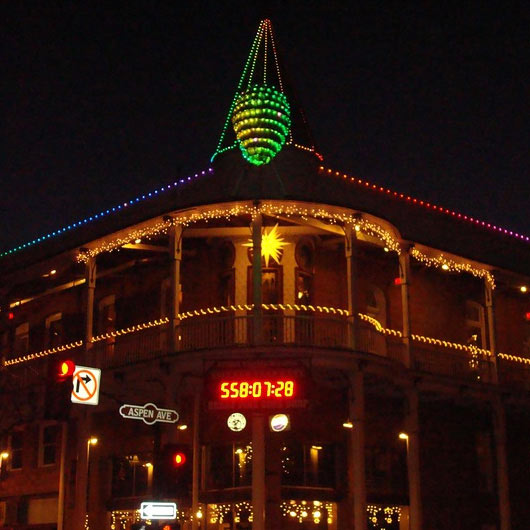“What leads us to leave places behind and what are the consequences of doing so?”
Matthew Christopher, a 39-year-old internationally acclaimed photographer, has spent the last decade documenting the forgotten structures of America. His current book, “Abandoned America: Dismantling the Dream” is a catalog of American history that encourages the reader to ask, “What leads us to leave places behind and what are the consequences of doing so?”
His beautifully illustrated book focuses on 25 places that have been left behind, 240 pages and 150 color photographs that are a feast for both eyes and soul. Along with the images come the stories – some historical, some mysterious, some heart-breaking — that transport readers back to the time when these structures were alive and serving important functions in American life. Each has its history, tales waiting to be read and shared.
Influenced by the decline of state hospitals and their sometimes haunting history, Matthew’s first Abandoned America adventure was photographing the Philadelphia State Hospital.
“When out documenting these places, you’re quick to find your senses on full alert. If you hear a branch against a window or a pigeon fly across the room it can startle you.”
“The intention of this book is to be a gift for the next generation. I wanted to show them my generation’s past and how to approach their future. The theme throughout is, above all, hope. Hope that no place is ever really lost, so long as its story is shared. I want people to see these forgotten factories and closed schools as fixer-uppers and historic landmarks with a lot of fight left in them. I want to encourage everyone to see the potential behind the patina before building something new.”
Locations include one of Niagara Falls’ swankiest hotels, the country’s largest private zoo, and the world’s fastest ocean liner – which is also larger than the Titanic and the largest ship ever built on US soil. While some places are left to rest in piece, a few are in the process of being brought back to life, like the Variety Theatre in Cleveland.

Thanksgiving Day, 1927, the Variety Theatre opened with a screening of “Hula” featuring Clara Bow. For decades, audiences there enjoyed movies, concerts and live performances, marveling at the beauty of the theater as they sat in beneath tapestries and chandeliers in a 350-seat balcony — the largest of its kind west of Ohio’s Cuyahoga River. The theater was later bought by Warner Bros., and then by a succession of owners until it was closed in 1990 after the ceiling began to fall during a Motörhead concert. Years later, the surrounding community established the nonprofit Friends of the Historic Variety Theatre in an ongoing effort to rescue, restore and reopen the iconic theater.

“The revitalization of the Variety Theatre is heartwarming and hopeful. As I walked up to the theater doors I saw soggy, homemade Valentine’s cards taped up outside by the Cleveland community. The resurrection of the theater may represent hope for economic revitilization for the surrounding neighborhood as well.”
There’s a romanticism about the 20,000 square foot Spanish Gothic-style theater with its marble, glass and brass fixtures. The massive structure covers an entire city block and is filled with the remains of museum-quality early 20th century décor.

It is such an important site and the community has been so committed to its restoration and preservation that they were named winners of Antique Archaeology’s national This Place Matters campaign, launched in partnership with the National Trust for Historic Preservation. As part of the celebration, Mike will travel there later this spring to congratulate the theater’s team in person and help create more media and public interest in their efforts.
“These forgotten places have personalities of their own. Exploring them initiates an internal connection that pushes you to ask yourself what your contribution to the world will be. The story doesn’t have to be over for places like the Fallside Hotel, the Randall Park Mall, or Gary, Indiana. Show people how you’ll aid in the aftermath.”

“All of these places I’ve photographed play a crucial part in American history in their own significant way. Listen to the stories of these locations; don’t let them be for nothing.”
Is there one of Matthew Christopher’s abandoned locations you’d like to explore or a revitalization project in your community? Tell us in the comments below. Don’t forget to follow along with Matthew’s many Abandoned America adventures on Facebook, Instagram, and Twitter.
CLICK HERE to order your signed copy of Abandoned America: Dismantling the Dream





